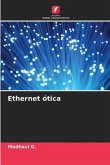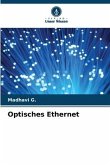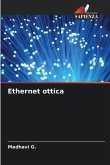This book gives the details about Optical Ethernet as a high speed data networking technology that uses optical fibers to transmit Ethernet frames over long distances. It combines the reliability and security of optical fiber with the flexibility and simplicity of Ethernet, making it a popular choice for high-performance LANs and WANs. Optical Ethernet works by converting electrical signals from Ethernet devices, such as computers and routers, into optical signals that can be transmitted over fiber optic cables. The optical signals are then received by optical transceivers at the other end of the fiber, which convert them back into electrical signals for use by the receiving Ethernet devices. One of the key advantages of optical Ethernet is its high speed. Optical Ethernet can transmit data at speeds of up to 10 Gigabits per Second (Gbps) or more, which is much faster than traditional Ethernet, which typically tops out at 1 Gbps. This high speed makes optical Ethernet ideal for applications that require large amounts of data to be transferred quickly, such as Video streaming, Cloud computing and Big data analytics.
Bitte wählen Sie Ihr Anliegen aus.
Rechnungen
Retourenschein anfordern
Bestellstatus
Storno








